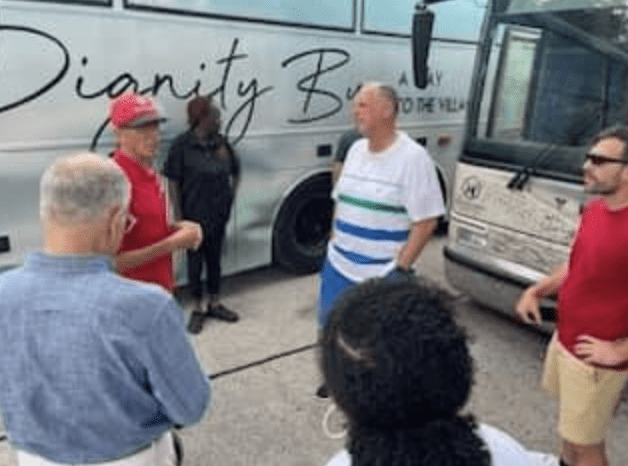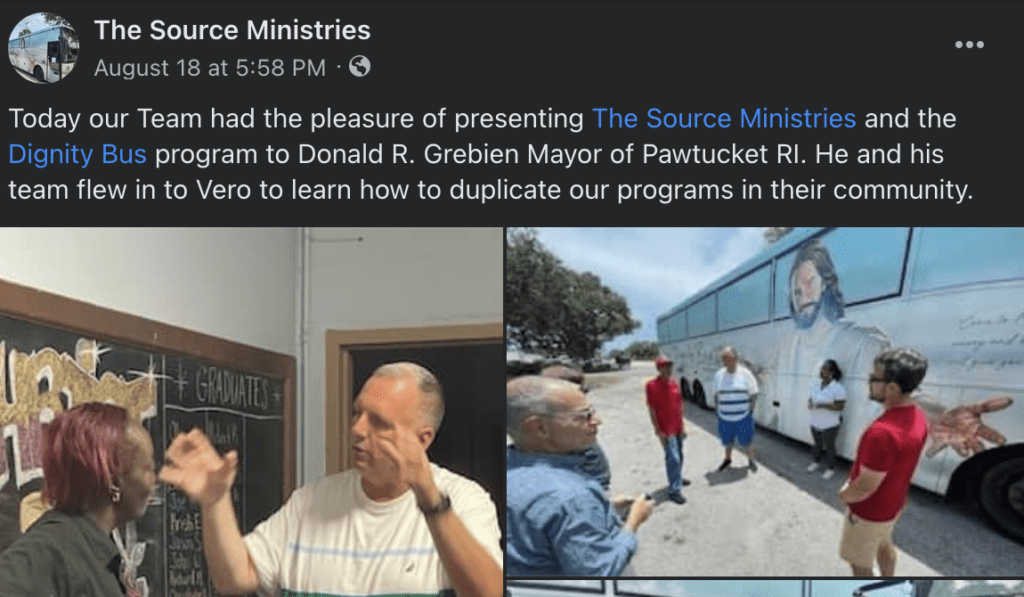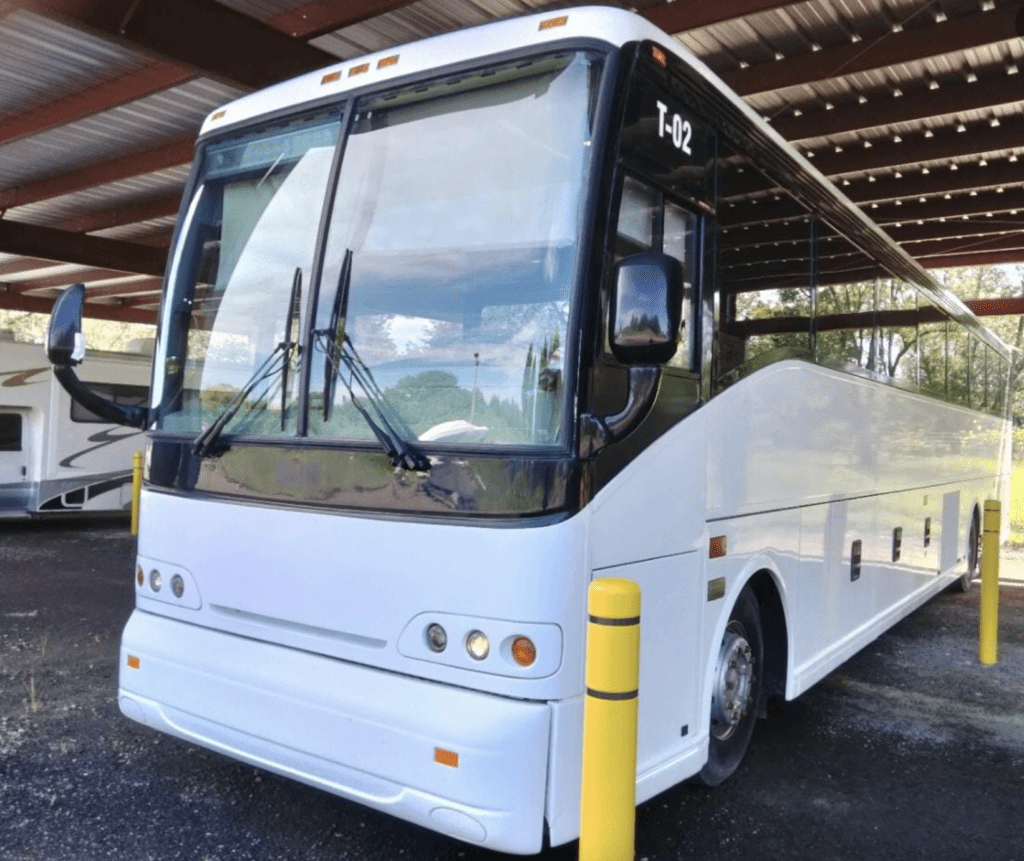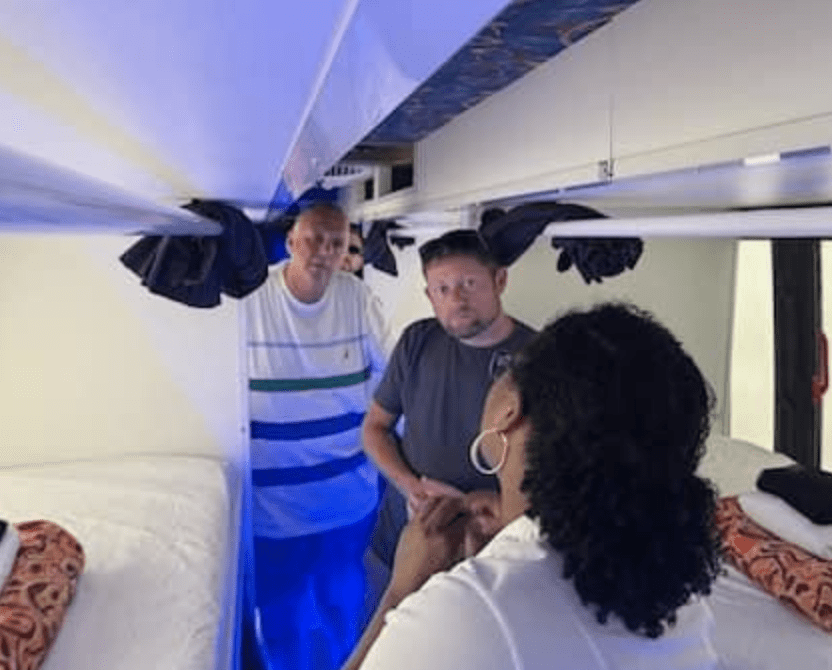Search Posts
Recent Posts
- Out and About in RI: Former Pawtucket Mayor Henry Kinch Tribute in Photos June 24, 2025
- Rhode Island Weather Forecast for January 24, 2025 – Jack Donnelly June 24, 2025
- ART! Mark Freedman, first featured artist of Summer Art Shows at Charlestown Gallery June 24, 2025
- The Bellevue Hotel: Procaccianti Co. New Luxury Boutique Hotel Set for Newport’s Iconic Bellevue Ave June 24, 2025
- Mike Stenhouse, CEO of RI Center for Freedom & Prosperity, named into College Baseball Hall of Fame June 24, 2025
Categories
Subscribe!
Thanks for subscribing! Please check your email for further instructions.

Homeless in RI: Dignity Bus attracts Pawtucket, Mass & Cass, US cities say no to encampments
Pawtucket considers the Dignity Bus:
The Mayor’s vacation time took a detour to Florida to visit The Source Ministries, the group that uses a retrofitted large bus – the Dignity Bus – as part of their programs to house and “heal” the homeless. Woonsocket has the first Dignity Bus in Rhode Island, which should be about ready – if not already – actively servicing those in need in the community.
Mayor Grebien has said he wants to double the services the city is hosting with the shelter on Main Street, run by Open Doors and other service providers, serving as a daytime “drop-in” center and then turning into overnight accommodations for approximately 30, drawn by lottery each day. The city, according to sources, is having difficulty locating a building to expand into. The Dignity Bus sleeps approximately 20.
A request to the city of Pawtucket for more information on the Mayor’s intentions was not responded to by publication time.




Woonsocket’s Dignity Bus
The Woonsocket Dignity Bus should be active by now, run by the Community Care Alliance. Here is an interview from The Public’s Radio, with Lynn Arditi:
Encampments
The Rhode Island Coalition to End Homelessness estimates that there are 80+ encampments across the state and that around 385 people are sleeping unhoused.
Charles Street – the 3 Charles Street encampments have closed. Most have taken other housing options, though some have been reported to be camping more north along Charles Street, along the pond and 146. Some neighbors have reported this to the city.
City after city is taking drastic steps to address encampments, which have turned some city streets into crime ridden areas, with open drug dealing and use. Cities such as San Francisco, long upholding the “right” of the unhoused to sleep on state/city property, are beginning to craft ordinances that will be used to address the issue more aggressively on behalf of those who live and work in the areas. Even progressives are now saying the system is not working and they must be moved.
Pasadena – the city is putting $2M to fund seven programs, including street outreach, motel vouchers, and housing navigation for up to 50 people per year who are living in 10 prioritized encampments along the 210 and 134 freeways.
Los Angeles – Los Angeles County officials cleared an RV homeless encampment in East Gardena and placed unhoused people in a motel.
Ithica, Michigan – Homeless encampments are located behind the Ithaca Wal-Mart and in big box parking lots in the city. Area leaders said the number of and populations in homeless encampments in the city have continued to increase since the spring. The homeless encampment, commonly referred to as “the Jungle”. Safety for both the unhoused and housed residents of the city is a concern across the board, “It’s illegal to camp on city property, period, but, what we’re proposing is allowing camping in a very large area in the Southwest, behind Walmart, and not allowing camping…” [in other areas], centralizing the encampments.
New York City – “Americans have lost patience with homeless advocates’ arguments that letting vulnerable people sleep on sidewalks and in parks is an acceptable part of urban life,” said a source quoted in The City Journal, a NYC based city publication with news around the country. In their article a few weeks ago, “Homelessness activists have lectured Americans about how they should learn to live with the large tent encampments of their “unhoused neighbors” on sidewalks and in parks. They have derided as bigotry observations that these encampments spawn violence. They have argued that the camps would disappear only when every unsheltered person receives permanent, subsidized housing, which even the most optimistic admitted would take years or decades.
Americans have stopped listening to the activists. Citizens and politicians of all stripes have recently taken steps to pass or enforce laws against public encampments, often in the same locales that once embraced a housing-only approach.
They have begun to realize that the activists’ promises that encampments would be abandoned once the government provided enough handouts and housing were a mirage.”
Said Judge Glock, of The Manhattan Project, “Americans understand that the homeless deserve compassion and dignity, but they also know that nothing is less compassionate or dignified than letting people die slowly in illegal encampments. They refuse to accept that these camps, almost unknown to American cities as recently as two decades ago, are an inevitable part of urban life—and they are pushing back.”
Foxboro
93 migrant families are being moved into hotels in nearby Foxboro, Massachusetts. These migrant families are taking precedent over unhoused residents in the community.
New Strategy for Mass & Cass in Boston – off to a rocky start
Boston Mayor Michelle Wu outlined a new strategy to reduce violence and homelessness in the Mass. and Cass area Friday, including a new ordinance that would make it easier to clear encampments and plans to open a new safe sleeping space that could accommodate up to 30 people. 230 people use the area, who may not be sleeping there. While the new area would include service provision, neighbors in the South End oppose this, saying it would be a new, 4th Mass & Cass encampment, closer to their residential neighborhood. Mayor Wu says the situation is a new public health emergency. Changes are expected to take 2 months and needs city council approval.
3 components – 1) removing tents and tarps – 2) dispersing crowds on the street into 30 new sleeping areas for those that don’t already have housing options but are using the area for “other purposes” – 3) legal language to accommodate action with significant police presence. They will move services to a new area on Mass Avenue – Atkinson Street – with a central command police post. Plans to make “Long Island”, abandoned facility, with a new bridge is at least 4 years away.
Sunday morning on WCVB with Mayor Wu:
Crossroads will open a 176 new apartment building for extremely low income in downtown Providence – construction will take almost 2 years
Warwick – In an editorial by John Howell, publisher of the Warwick Beacon: “As summer winds down, the desperation of people living out of doors will increase. Some will rely on lighting camp fires to keep from freezing, and any number of disasters could occur. State leaders must put their heads together now, when it’s warm, to figure out how best to ensure everyone experiencing homelessness has, at the very least, a reliable, safe, and warm place to go when the winter begins”.
Rhode island Housing – Proposals had an Aug. 1st deadline. There is an Aug. 31st deadline for seasonal warming centers and shelters. – with a $9 Million pocket of funds.
Fall is 26 days away.
Winter is 115 days away.
